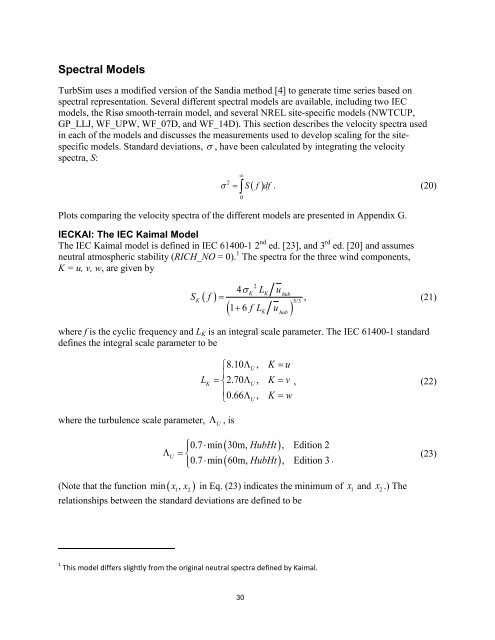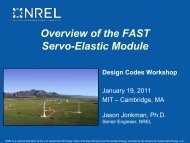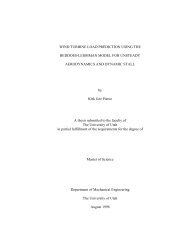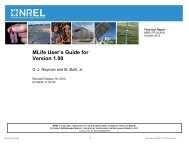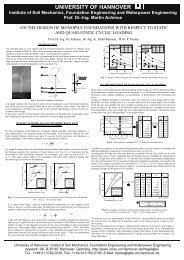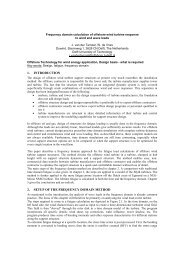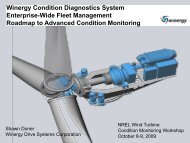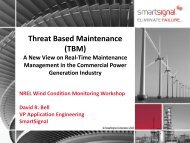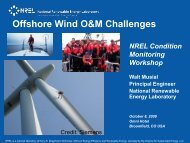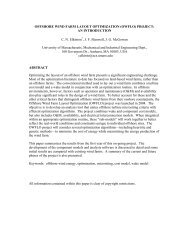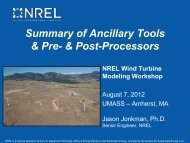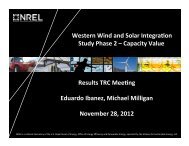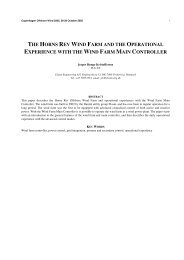TurbSim User's Guide: Version 1.06.00 - NREL
TurbSim User's Guide: Version 1.06.00 - NREL
TurbSim User's Guide: Version 1.06.00 - NREL
You also want an ePaper? Increase the reach of your titles
YUMPU automatically turns print PDFs into web optimized ePapers that Google loves.
Spectral Models<strong>TurbSim</strong> uses a modified version of the Sandia method [4] to generate time series based onspectral representation. Several different spectral models are available, including two IECmodels, the Risø smooth-terrain model, and several <strong>NREL</strong> site-specific models (NWTCUP,GP_LLJ, WF_UPW, WF_07D, and WF_14D). This section describes the velocity spectra usedin each of the models and discusses the measurements used to develop scaling for the sitespecificmodels. Standard deviations, σ , have been calculated by integrating the velocityspectra, S:∞0( )2σ =∫S f df . (20)Plots comparing the velocity spectra of the different models are presented in Appendix G.IECKAI: The IEC Kaimal ModelThe IEC Kaimal model is defined in IEC 61400-1 2 nd ed. [23], and 3 rd ed. [20] and assumesneutral atmospheric stability (RICH_NO = 0). 1 The spectra for the three wind components,K = u, v, w, are given bySK( f )=4σLu2K K hub5/3( 1+6 fLKuhub), (21)where f is the cyclic frequency and L K is an integral scale parameter. The IEC 61400-1 standarddefines the integral scale parameter to bewhere the turbulence scale parameter,⎧8.10 ΛU, K = u⎪LK= ⎨2.70 ΛU,K = v , (22)⎪⎩0.66 ΛU, K = wΛU, is( HubHt)( HubHt)⎧⎪ 0.7⋅min 30m, , Edition 2ΛU=⎨⎪⎩ 0.7⋅min 60m, , Edition 3 .(23)x1 x2in Eq. (23) indicates the minimum of x1 and x2 .) Therelationships between the standard deviations are defined to be(Note that the function min ( , )1 This model differs slightly from the original neutral spectra defined by Kaimal.30


